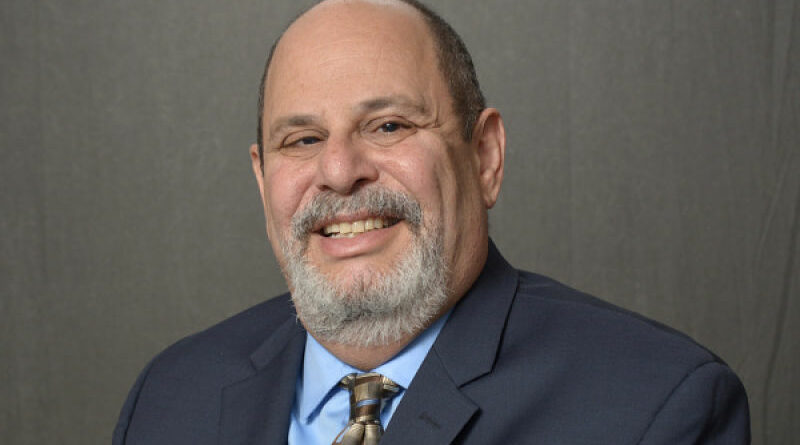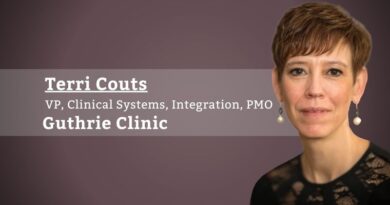How Healthcare is Taking the First Steps to Embrace Consumerism?
By Rich Temple, CIO, Deborah Heart and Lung Center
As healthcare continues to rapidly evolve and patients and families increasingly expect to interact with their healthcare providers in the same manner as they interact with their airlines or e-commerce vendors, healthcare providers face a unique challenge in accommodating this expectation. There are many reasons why the nature of healthcare makes embracing consumerism particularly daunting but the mere fact that it may be daunting does not mean that it isn’t critical. Prospective patients expect it to be easy to make appointments and receive updates on their care through mobile apps and other electronic mechanisms and, if they don’t feel that a healthcare provider has been able to make their experience frictionless, they won’t hesitate to seek out an alternate provider. If this occurs too frequently, you can see how the ongoing drain of prospective customers could adversely affect the ongoing business prospects of the healthcare provider.
New ways of improving communication with patients while they are on-site are bubbling to the surface including being able to be more transparent about wait times and finding out particular needs that a patient has to make their experience more enjoyable.
Tough or not, all providers have to jump into the consumerism pond, and consumerism is truly the primary focus of the healthcare world in 2019. Providers are attempting to offer on-line booking capability for patients, in much the same way that one might anticipate booking a seat on an airplane. But, consider some aspects of this process that makes this much trickier than booking an airplane seat. A provider will need to be very confident that (1) the patient will actually show up for the appointment and (2) that they will be paid for the services that are rendered to the patient when they arrive. This requires thorough insurance data capture and validation with an understanding of what insurance will pay and what the patient’s financial responsibility will be. Also – and this is especially true for specialty practices – many health insurance payors require prior authorization before they will pay for certain services and oftentimes, a lot of clinical documents need to be exchanged for the insurance to approve the visit or procedure. This document exchange is often a very cumbersome process involving many different parties: the patient, the referring physician, the insurance company, and others, and can be extremely frustrating. A consumerist approach to healthcare attempts to mitigate these hassles, and current technology trends are taking steps to more effectively address these built-in obstacles and help meet or exceed prospective patient’s expectations.
To make this process as frictionless as possible, many healthcare providers are leveraging “patient portals” or mobile apps as their point of interaction with patients. These tools are getting increasingly better at making the patient-provider interaction smoother and providing a much-improved capacity for exchanging critical data and documents. Most patient portals allow patients to request medication refills with a few taps or clicks, pay outstanding balances securely, and communicate with their healthcare care team about non-emergent issues on time. There is a great value to that and patients have been shown to appreciate it. The improvement in the mobile experience has taken things to the next level and it allows a patient to interact with the healthcare provider through a device that they have become increasingly used to using for many of their everyday tasks – their cell phone.
In this new paradigm, providers not only benefit by having patients be able to communicate with them, but they benefit by being able to communicate with their patients. If a patient is coming in for a procedure, communicating with them electronically about what they need to do before the procedure or what time they need to arrive is efficient for all parties involved. Providers can also share news about new programs pertinent to a patient’s condition and facilitate a lot of information capture quickly and easily through electronic health questionnaires, the modern-day digital equivalent of the clipboard documents that patients typically have to fill out when they arrive for an appointment.
Behind the scenes, the patient experience is being enhanced by improvements in how important clinical data is shared between different providers. Electronic “continuity of care documents” (CCDs) are becoming the norm. These documents are generated at the end of each encounter and may be electronically sent to another provider of care or to a “health information exchange” (HIE), who would be able to share this with any provider who participates in the HIE. Also, a new technology called FHIR (“Fast Healthcare Interoperability Resources”) is making it easier to share data across many digital platforms through APIs (“application programming interfaces”). The recently released Apple Health Record is a great example of this new wave of “interoperability” of electronic health records; in essence, allowing patients to carry the preponderance of their health history in their pockets on a secure app on their cell phones.
New changes are afoot at many providers when the patient arrives. The patient may be able to receive directions on their phone to the parking area and a map of the facility when they arrive, including how to access amenities such as the cafeteria or gift shop. New ways of improving communication with patients while they are on-site are bubbling to the surface including being able to be more transparent about wait times and finding out particular needs that a patient has to make their experience more enjoyable. And, while technology is helping play a role, providers are focusing on non-technology-based things such as providing water for patients, offering them a blanket if they are cold, and configuring patient exam rooms to maximize the quality of the interaction between physician and patient.
So it’s a very busy time as it relates to enhancing the patient experience. These new technologies, coupled with a reinvigorated emphasis on patient needs and ease of interaction are coming into their own and having an appreciable effect on the totality of the patient experience.



